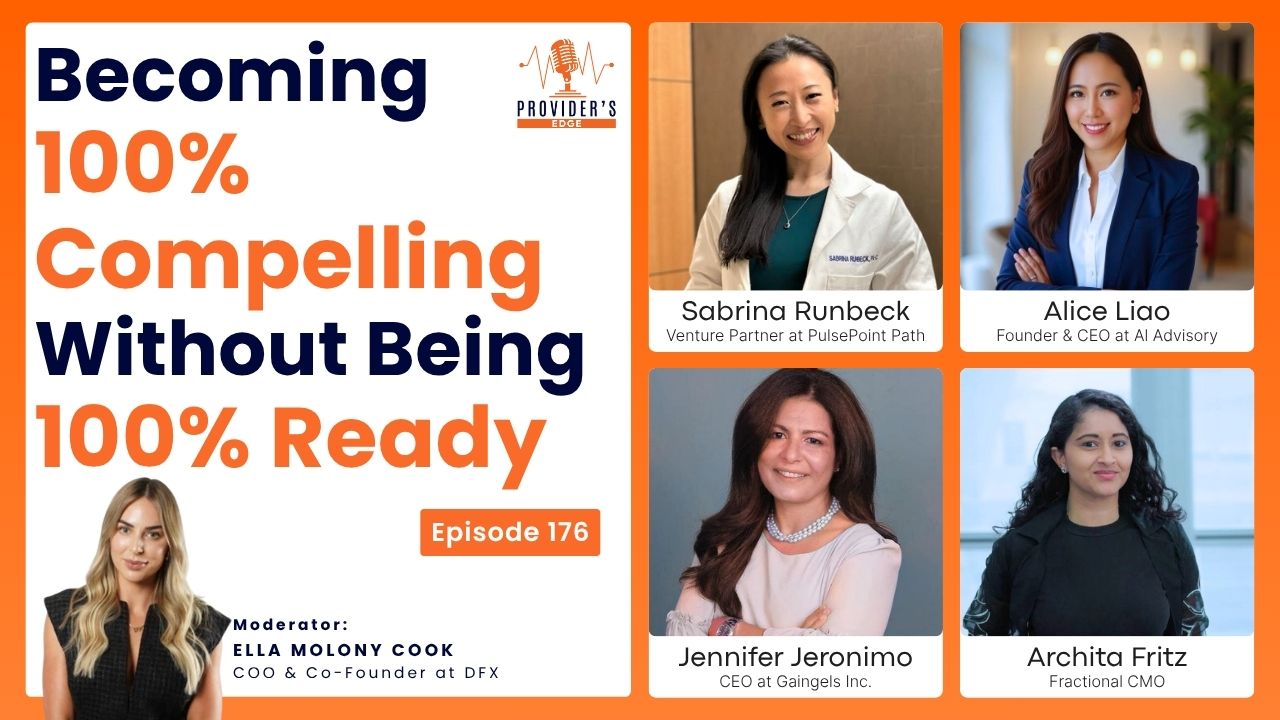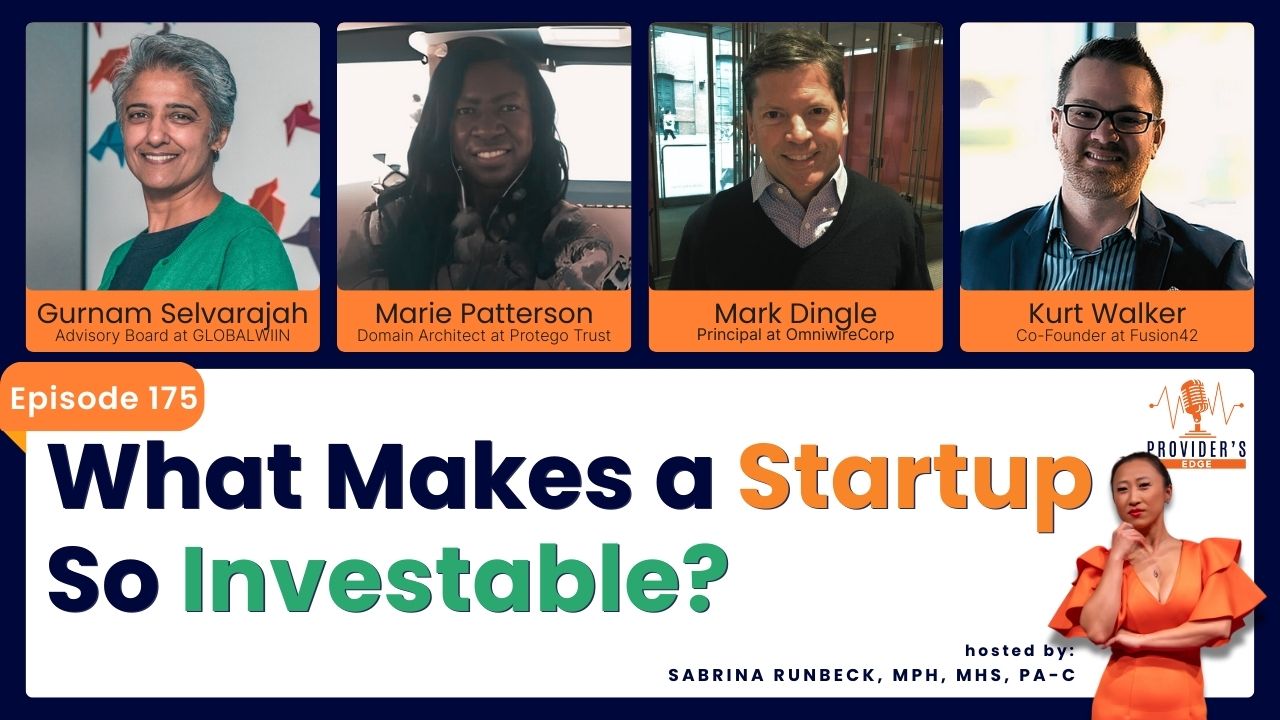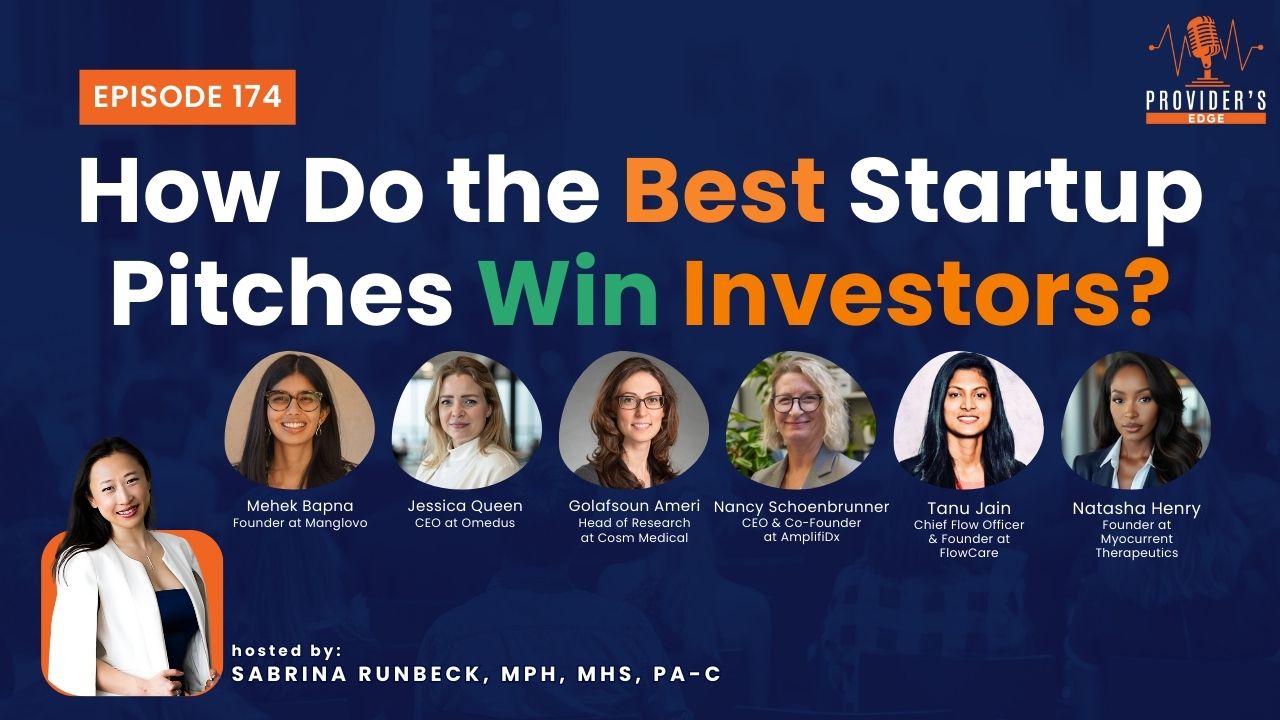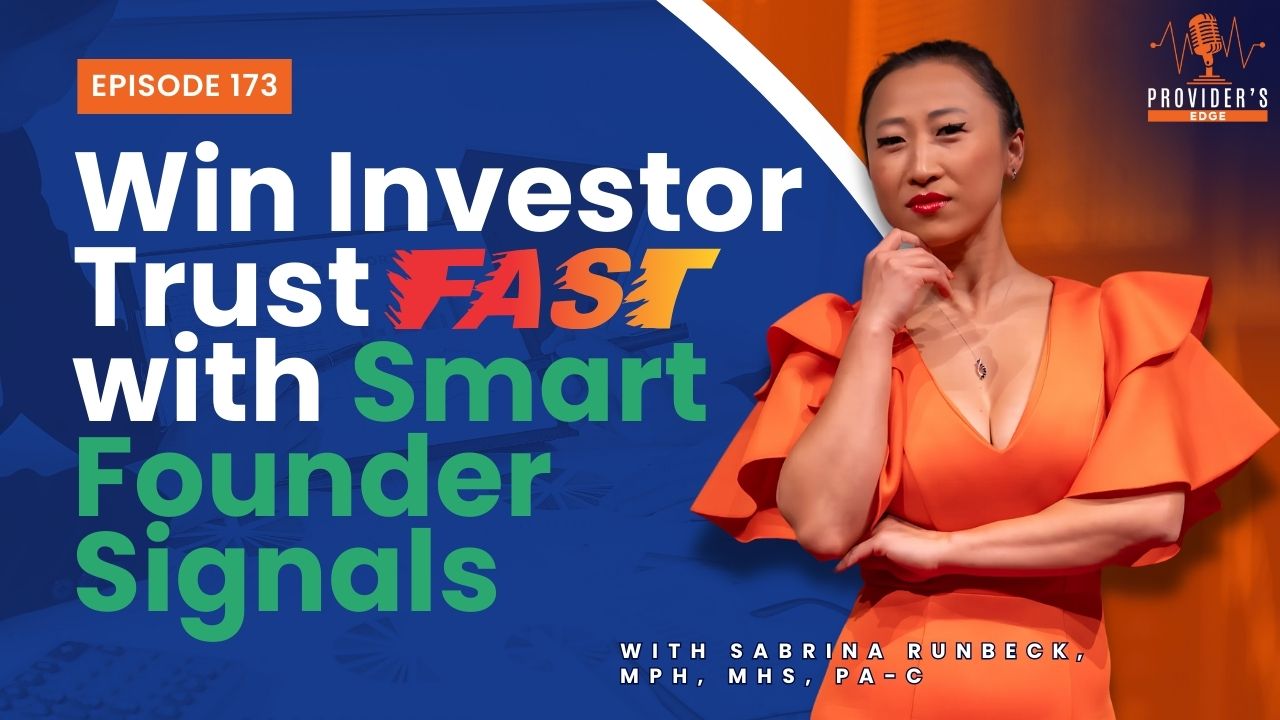
When Should You Simplify
or Showcase Science in Your Pitch Deck?
Most women founders in health innovation are told to “explain the science” to earn credibility. But when investor eyes glaze over mid-slide, it’s not your science—it’s the structure.
In deep-tech and healthcare, you must prove your rigor—but pitch your relevance.
This article will help you decide when to simplify, when to dive into the details, and how to sequence your science so investors stay engaged, excited, and ready to say yes.
We’ll answer:
- What scientific details matter most to early-stage investors?
- How can you simplify your innovation without sounding vague?
- Where should your science live in the deck—and where should it not?
- When does overexplaining hurt your chances?
- How do you shift risk-heavy questions into opportunity-driven answers?
Let’s start with what every HealthTech founder needs to hear first.
Listen anywhere you get your podcastin' on.
Live Interview

What Scientific Details Actually Matter to Early-Stage Investors?
Investors don’t need to understand every pathway, molecule, or method. They need to trust:
- Your solution addresses a large, urgent problem
- Your team has the technical ability to deliver
- Your path to clinical validation, regulatory milestones, or market traction is clear
As Marie Patterson shared on our PulsePoint panel:
“When I’m investing, I’m asking: Does this founder clearly understand why this science matters in the real world?”
Instead of walking through your entire mechanism of action, focus on these:
- What it does differently or better than the standard of care
- How it impacts patient outcomes, speed, cost, or experience
- What early data or signals show it’s working
Show the science works—but don’t make investors feel like they’re in your thesis defense.
How Can You Simplify Your Innovation Without Sounding Vague?
Clarity isn’t the opposite of complexity. It’s the evidence you understand what matters most.
The key? Translate features into impact. Use metaphors, comparisons, and outcome statements.
🔬 Instead of: “We use a 6-parameter predictive biomarker for differential diagnosis.”
✅ Say: “We help doctors detect postpartum depression before symptoms surface—like early warning lights in a car.”
🔥 Power Prompt: “What’s the one sentence a 10-year-old could repeat back about what you do?”
Use this at the top of your pitch. Investors will ask for more if they’re intrigued. If not? They won’t ask, no matter how brilliant the science is.
Where Should Science Live in Your Deck—And Where Should It Not?
Your core deck should showcase only what’s needed to prove commercial viability and de-risk technical claims.
Use this 3-slide science formula:
- Problem + Why Now (with Market Context)
- Include a clear, patient-focused pain point.
- Show why this has not been solved effectively until now.
- Solution Overview (Outcome-First Framing)
- Describe what your solution achieves, not how it works (yet).
- Scientific Validation or Tech Differentiator Slide
- One clean slide with a visual of how it works, key metrics, or a roadmap of your studies or trials
🚫 Avoid:
- 5-slide sections on deep methods
- Raw data without context
- Dense charts without a clear takeaway
💡 Tip: Put your full white paper, protocols, or extra data in your appendix. If they want it, they’ll ask.
When Does Overexplaining Hurt Your Chances of Getting Funded?
Overexplaining is often a defense mechanism—it signals:
- “I’m nervous you won’t take me seriously.”
- “I need to justify this with everything I know.”
But to investors, it reads as:
- “This founder can’t focus.”
- “They’re not thinking about how we think.”
As Sabrina Runbeck explains:
“You’re not pitching for applause. You’re pitching for action.”
Use this reframe: “If I only had 3 minutes, what would I say to make this sound fundable?”
Confidence is knowing you can explain more—but you don’t have to.
Who Should You Pitch First—The Scientist or The Business Leader?
Always pitch to the investor’s decision-making brain, not their academic curiosity.
Investors fund:
- Risk-adjusted return opportunities
- Founders who show leadership under ambiguity
- Clear pathways to growth, exit, or strategic acquisition
Pitch the vision first, not the venture.
Start with:
- Patient impact
- Market size
- Clear traction or early validation
Then support with:
- IP defensibility
- Scientific roadmap
- Technical milestones
Let your science validate—but let your strategy persuade.
How Do You Answer Investor Questions That Focus on Risk?
Women founders often report being asked more “prevention” questions:
- “What if the clinical trial fails?”
- “What happens if this gets delayed?”
- “What if your TAM is overestimated?”
Don’t get defensive. Pivot.
Here’s a reframe script:
“That’s a great point. Here’s how we’ve already mitigated that risk—and here’s the upside if we succeed.”
This does 3 things:
- Shows preparation
- Shows maturity
- Turns fear into focus
As Mark Dingle shared:
“Founders who lead the conversation—even when it’s hard—earn more trust.”
Don’t fear risk talk. Lead it.
What’s the Most Powerful Way to End Your Pitch?
End with belief and clarity:
- Why this is the moment
- Why your team is the one
- Why this will create patient, clinical, and commercial value
Then ask for exactly what you want:
- “We’re raising $2M to complete our Phase I trial, secure FDA breakthrough designation, and onboard 3 hospital partners.”
Make your ask feel like an invitation, not a plea.
Then stop. Let the silence hold.
That’s when the right investors lean in.
Here are 3 ways we can support you right now:
🎤Be a Featured Guest on the Provider’s Edge
Have traction and a story to share? Apply to join us on the show: PulsePointPath.com/Call-Sabrina
🎯 Get You In Front of Investors
We match you with the most aligned investors and decision-makers who care about your niche already. Apply at PulsePointPath.com/Pitch-Application
About Sabrina Runbeck
Sabrina Runbeck, MPH, MHS, PA-C helps healthcare technology companies scale sustainably—without burning out their teams or running out of cash. She is the Co-Founder of PulsePoint Path and works alongside a 12-integrated board of advisors to help founders make strategic decisions that multiply impact and protect capital. Her signature 5D Integrated System helps companies move beyond one-dimensional problem solving—what they think the issue is—and instead, builds an Empowered Ecosystem across leadership, team dynamics, and systems alignment. This is how founders evolve from early traction to 10x growth. Sabrina is also a TEDx speaker, former Cardiothoracic Surgery PA, and trusted advisor with over 15 years of experience in public health, neuroscience, and business acceleration.
★ NEXT STEP ★
Need clarity on your hiring or onboarding strategy?
Let’s create your people-powered growth blueprint in under 5 hours 👉 PulsePointPath.com/Call
Recommended Podcast Episodes
Be a guest on our show
The Provider's Edge show is always looking to feature healthcare change-makers and celebrate the work they are doing to improve healthcare.
Together, we can encourage other healthcare entrepreneurs and startup founders to up-level their businesses.
If you or someone you know could be a good fit as a guest on the show, please click on the bottom below to apply as a speaker.
Healthcare Entrepreneurs!
I can help you gain visibility and credibility in the right circles so you can accelerate your mission and profitability!
After overcoming burnout working in surgery, I went back to my roots in neuroscience and public health. I learned the importance of building key human relationships with my team throughout our organization.
While helping healthcare executives and entrepreneurs to get out of the day-to-day operation of their practice, I realized I needed more visibility and more connections to reach my ideal clients.
Once I set out to be highly visible in the right circles, I was able to leverage my network of strategic partners to convert clients 5x higher than any other marketing channel I had tried previously.
Now I help healthcare change-makers to accelerate their impact and increase profitability by gaining visibility and credibility with the right strategic partners.
My clients no longer worry about where their next client is coming from, the need to plan additional budget for ads spending, or losing the ability to connect with others because their social media account is shut down.
If you want to share your social mission with the world and gain pivotal supporters that become loyal clients... then you are in the right place, with the right consultant who is also a recovered clinician.




